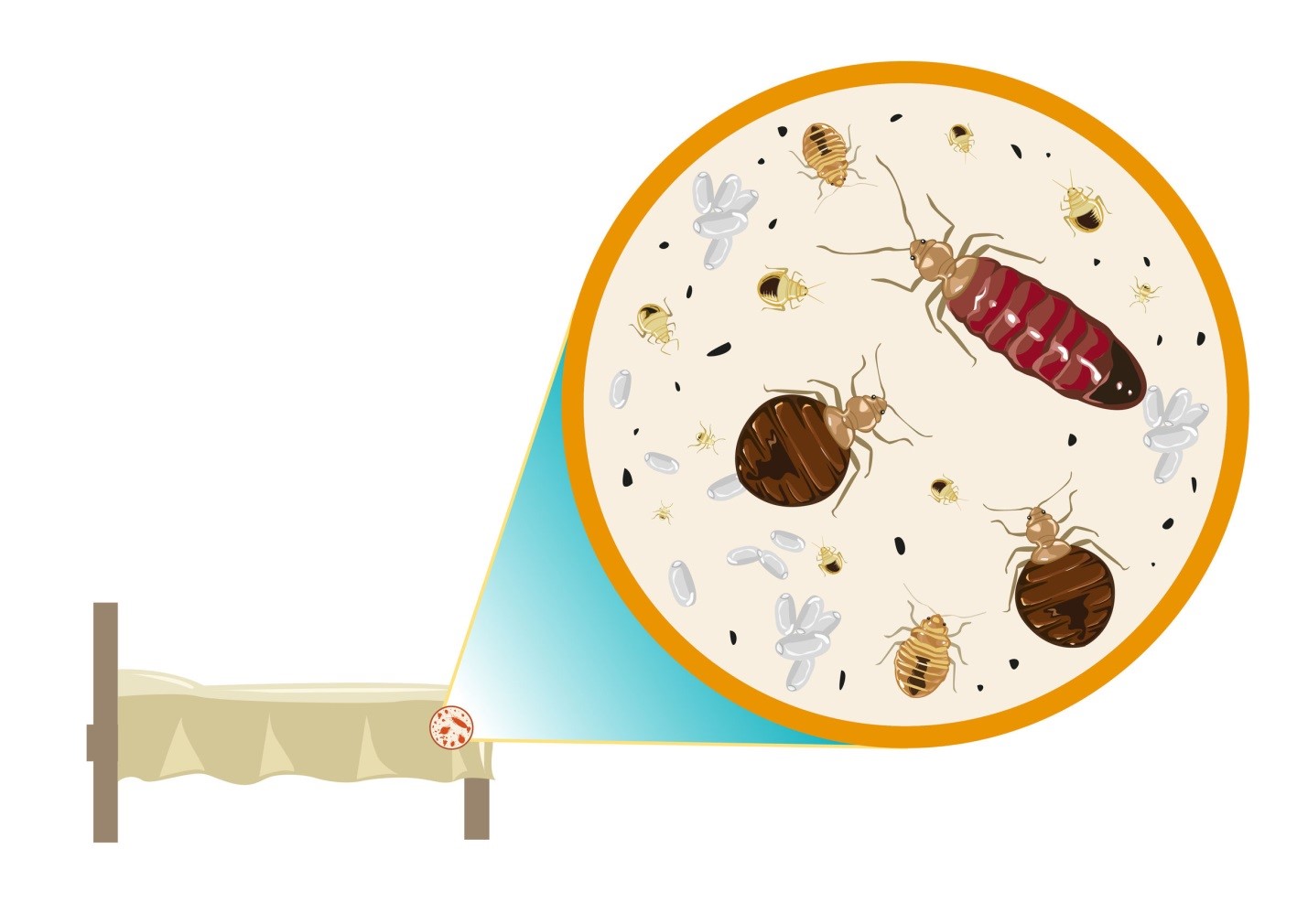Moving In a New Home? How to Make Sure It’s Bedbug-Free

So you got yourself a great two-bedroom apartment in a nice neighborhood, with ample storage space, a large patio, and really close to your work. You start moving and unpacking your belongings over the weekend when suddenly you notice some shed skins along the carpet edges and some dark spots in the seams of the curtain and behind the headboard of the bed. It all culminates with the appearance of a flat, oval, reddish-brown bug running along the living room floor, desperate to find a place to hide and wait for night’s cover.
And then it hits you: you just moved into a place infested with bed bugs. While the tiny critters don’t carry any diseases and are not a serious threat to your health, they do feed off of your blood and can decorate your arms and shoulders with extremely itchy bumps. For others who may not react to bed bug bites at all, the psychological impact is still powerful: from anxiety and sleep disorders to PTSD and even depression, the emotional toll of the blood suckers can certainly disrupt homeowners’ lives.
To help you make sure you are not moving into an infested home or apartment, we’ve put together a list of simple steps you can take before signing the lease.
5 Ways to Detect a Bed Bug Infestation in Your New Apartment

Verify the Bed Bug Registry
The Bed Bug Registry is a public database containing thousands of user-submitted bed bug reports from cities in Canada and the United States. Addressing both travelers and long-term renters, the platform allows users to search for bed bug complaints by looking up their hotel or building’s name, address, or city and state. However, keep in mind that some of the complaints haven’t been reviewed by an inspector, and the signs of a bed bug infestation are not easy to recognize (or can be taken for something else).
Talk to your landlord
Before moving into your new home, speak to your landlord about the way they identified and handled previous infestations inside the building. Since full eradication of an infestation is rarely successful unless building management is knowledgeable and acts swiftly, it’s important to have this conversation with your potential building manager. In some regions, landlords are required to disclose a property’s bed bug history, but most tenants are forced to find out for themselves.
Confirm it with your neighbors
If your landlord is dismissive (let’s face it, they are interested in keeping quiet about these sorts of things) or gets defensive when asked about bed bugs, consider introducing yourself to your neighbors from your complex and the nearby units to get the inside scoop on the area’s bed bug problem. Renters usually have no reason to hide this information, particularly when they are not satisfied of the ways in which management is addressing the issue.
Look for the signs yourself
If nothing else helps, you can start looking for specific bed bug evidence inside your new home. Here’s what to look for and where:
- Molted skins – Immature bed bugs must shed their skin several times in order to grow larger, and they usually leave them along mattress seams, in ceiling junctions, along baseboards, and on clothes and household items.
- Fecal spots – When bed bugs are not feeding, their time is spent digesting their blood meal and leaving semi-liquid waste along the mattress seams, near electrical outlets, near carpet edges, inside curtain seams, and behind wall pictures.
- Live bugs – Bed bugs are very good at hiding from light, but they aggregate together in certain spots after feeding: along mattress seams, behind loose wallpaper, inside holes and crevices, inside the bed frame, behind baseboards, in personal belongings (clothes, household items, books, etc.)

Conduct a canine inspection
If you really want to make sure you won’t be moving again anytime soon, contact a professional bed bug exterminator in Toronto that offers canine detection services for bed bugs. Diligent and armed with highly specialized detection tools, dogs have been used with great success for the detection of termites, bed bugs, and other home invaders. It is estimated that trained dogs are 98 percent accurate in identifying all life stages of bed bugs and can be used for low-level and large infestations in homes, hospitals, schools, and all sorts of commercial environments.
Detecting and eliminating bedbug infestations is not an easy process, but following these steps above and asking for the assistance of a professional pest control company in Toronto to handle potential infestations will definitely keep you ahead of the game.
About the Author
Daniel Mackie, co-owner of Greenleaf Pest Control, is a Toronto pest control expert well-known as an industry go-to guy, an innovator of safe, effective pest control solutions, and is a regular guest on HGTV. Mackie, along with business partner Sandy Costa, were the first pest control professionals in Canada to use detection dogs and thermal remediation for the successful eradication of bed bugs. In his free time, he is an avid gardener.



You must be logged in to post a comment.